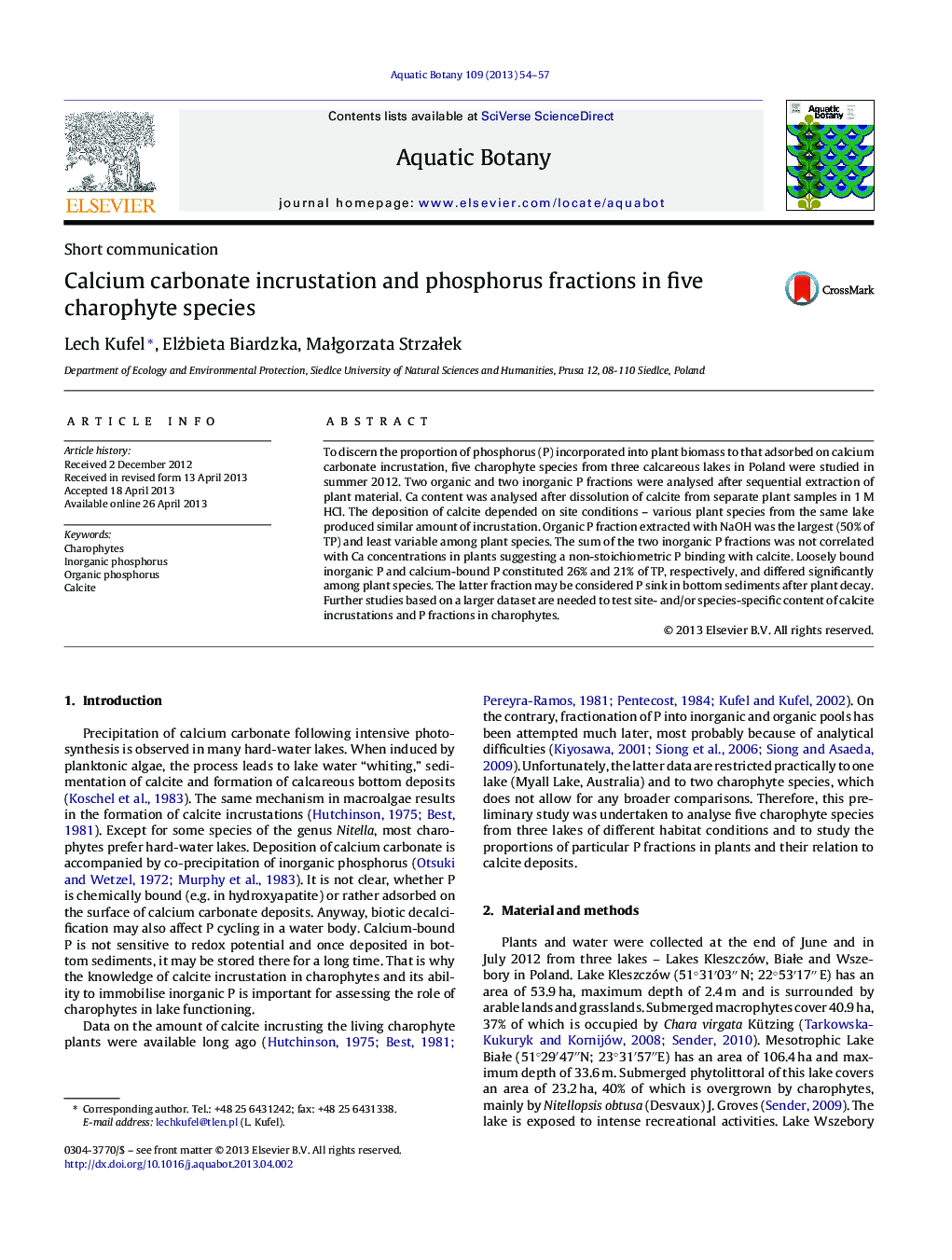| Article ID | Journal | Published Year | Pages | File Type |
|---|---|---|---|---|
| 4527899 | Aquatic Botany | 2013 | 4 Pages |
•Incrustations on 4 charophyte species from 2 lakes accounted for ca. 70–77% of dry weight.•Organic P extracted with NaOH was the largest and least variable total P fraction.•The proportion of inorganic to organic P in plants did not differ among species.
To discern the proportion of phosphorus (P) incorporated into plant biomass to that adsorbed on calcium carbonate incrustation, five charophyte species from three calcareous lakes in Poland were studied in summer 2012. Two organic and two inorganic P fractions were analysed after sequential extraction of plant material. Ca content was analysed after dissolution of calcite from separate plant samples in 1 M HCl. The deposition of calcite depended on site conditions – various plant species from the same lake produced similar amount of incrustation. Organic P fraction extracted with NaOH was the largest (50% of TP) and least variable among plant species. The sum of the two inorganic P fractions was not correlated with Ca concentrations in plants suggesting a non-stoichiometric P binding with calcite. Loosely bound inorganic P and calcium-bound P constituted 26% and 21% of TP, respectively, and differed significantly among plant species. The latter fraction may be considered P sink in bottom sediments after plant decay. Further studies based on a larger dataset are needed to test site- and/or species-specific content of calcite incrustations and P fractions in charophytes.
